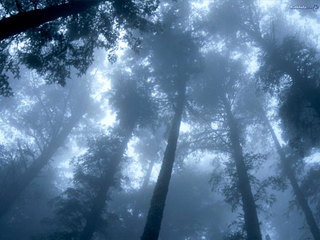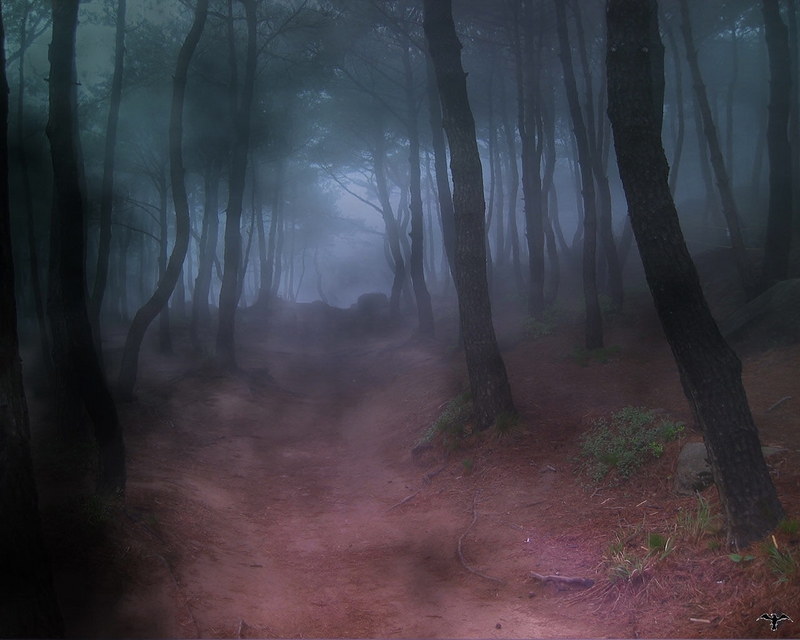Introduction

Thus, through the primeval beginnings be distant and dim, yet by the ancient teachings do we know the time when the lands were conceived and the islands born; Though the origins be vague and indistinct, yet by relying upon the sages of antiquity do we perceive the age when the deities were born and man were made to stand.
According to Craft oral tradition, the wise were once the priests and priestesses of a peasant Pagan religion. Members of this secret sect met at night beneath the full moon, for these were the "misfits" and "outcasts" who did not fit into mainstream society. Little has changed over the centuries and the Craft community still embraces individuals frequently rejected in mainstream society. These include gays, lesbians, transgendered individuals, and other people with the courage to live their lives authentically in accord with who they are inside their hearts, minds, and spirits.
When the last tree is cut
the last river poisoned
the last fish caught
then only will man discover
that he cannot eat money.
-Cree Indian Wisdom
Sacred Forests in History

Ancient people were intimate with their surroundings. They so often weaved themselves into the tapestry of life surrounding them so exquisitely that we can only admire their sensitivity and their wisdom. They had a very special understanding of the places, the locus genius of their territory.
Forests were of course of great importance to ancient people, and almost everywhere in the world trees grow, some forests were to be protected, and never desecrated. In the seminal book of Sir James Frazer The Golden Bough (1935), we have an impressive and eloquent evidence of how people, from the paleolithic era onwards went on about preserving and worshipping their forests; how they set out certain forests as sacred. "In them no axe may be laid to any tree, no branch broken, no firewoood gathered, no grass burnt; and animals which have taken refuge there may not be molested."1
In the world of classical Greece, and then of Rome, these special groves and forests were usually enclosed by stone walls. This enclosure was called in Greek Temenos, a cut-off place, or a demarcated place. A better translation would be "a sacred enclosure." Indeed a periodical entitled Temenos started to be published in England in the late 1970s explicitly evoking the spirit of Temenos as a sacred enclosure, and calling for the creation of sacred spaces.
In Latin the term for these demarcated places was templum. Templum was of course the original root of the word 'temple.' To begin with, those sacred enclosures were the sanctuaries in which religious ceremonies took place. They were in fact open air temples. When later on temples were erected as monumental buildings with columns and all, sacred groves and forests did not cease to exist. They were still cherished and protected. They inspired the sense of awe, the sense of the mystery of the universe, a higher sense of in-dwelling, being close to gods. The roman philosopher Seneka so writes in the first century A.D.:
"If you come upon a grove of old trees that have lifted their crowns up above and shut out the light of the sky by the darkness of their interlacing boughs, you feel that there is a spirit in the place, so lofty is the wood, so lonely the spot, so wonderous the thick unbroken shade."2
This sense of the mystery of the universe, which some places evoked more than other places, led ancient people to celebrate and protect these places. They felt that in those places their life was enriched and deepened. In sacred groves and forests they felt close to gods and other sublime forces of nature. This sense of the mystery of the universe has, by and large, been lost by modern Western man. But not entirely so.
When we go to Delphi, on a crisp spring day, at the time when the hordes of tourists did not desecrate the place yet, and when in peace and tranquility we identify ourselves with the spirit of the place, we feel a tremendous power emanating from their surroundings.
The sense of the sacred resides in us all. But now it requires very special circumstances for this sense to manifest itself. Our jaded bodies, our overloaded senses and overburdened minds make the journey of transcendence--to the core of our being--rather difficult nowadays.
For the ancient people the sense of the sacred was enacted daily. The whole structure of life was so arranged that the human being could not only experience the sacred but was encouraged to do so. It is rather different in our times.
In the sacred groves and forests of ancient Greece, particular species of trees were dedicated to particular gods. Oaks were in the domain of Zeus, willows of Hera, olives of Athena, the laural of Apollo, pines of Pan, vine of Dionysus. But this identification was not rigid. The ancient Greeks were generous and flexible people. In various localities, due to specific traditions, different trees could be dedicated to different deities. On the island oif Lesbos, for instance, there was an apple grove dedicated to Aphrodite.
Many of the sacred groves contained springs and streams and sometimes lakes. The pollution of these springs and lakes was absolutely forbidden. There was usually a total ban on fishing, with the exception of priests. It was believed that whoever would fish in the lake Poseidon and would catch fish would be turned into the fish called fisher.
In Pellene there was a very special sacred grove, dedicated to Artemis the savior, which no man could enter except the priests. This was rather unusual. The common rule was that ordinary people could enter the grove providing they came ritually clean, not guilty of any serious crimes, especiallly blood guilt.3
The tradition of sacred groves and forests was maintained by the ancient people throughout the world. Sacred groves in India are as ancient as the civilization itself. Indeed they go back to the prehistoric, pre-agricultural times. While the idea and the existence of sacred forests and groves did not survive in the West--as we have progressively become a secular society--those groves survived in India until recent times. However, with the weakening of the religious structure of beliefs, the very idea, and hence the existence of the sacred groves and forests have been undermined in India. Yet there are still some sacred groves in India--left, particularly among tribal people.4
One of my favorite definitions of the forest is that given by the Buddha. For him the forest was "a peculiar organism of unlimited kindness and benevolence that makes no demands for its sustenance and extends generously the products of its life activity; it affords protection to all beings, offering shade even to the axeman who destroys it."
The native Americans or American Indians have been particularly sensitive to the quality of places. For them, to worship a mountain or a brook or a forest was quite a natural thing, for every plant, every tree as well as Mother Earth and Father Heaven were imbued with a spirit.
In the cosmos infused with spiritual forces, delineating special places as particularly important and sacred was as natural as it was inevitable. These special places were also the places of ritual and ceremony, the ones in which the sacred was enacted in daily life, and in the act, the essential mystery and divinity of the universe reaffirmed.
In the Western world the churches and shrines served this purpose--of connecting man with the sacred. But that was some time ago. As we had become progressively secularized so we have lost the sense of the mystery of life and the sacredness of the universe. The churches are now hollow and reverberate with nothingness, for the spirit is gone from the people. The churches are being closed. In England alone two thousand of the existing sixteen thousand churches have been closed. It is reported that only three percent of the people regularly attend the Anglican church. And so the Bishop of Durham proclaims: "It is not now the case that England is a Christian country." Is it not similar in other so-called Christian countries?
The original temple or templum or Temenos have lost their meaning, for our hearts so often are cold, and our minds have lost touch with the mysterious and the sacred. As we have impoverished the universe of the sacred, so we have impoverished ourselves. As we have turned sacred groves and other forests into the timber industry, we no longer have natural temples in which we can renew ourselves.
